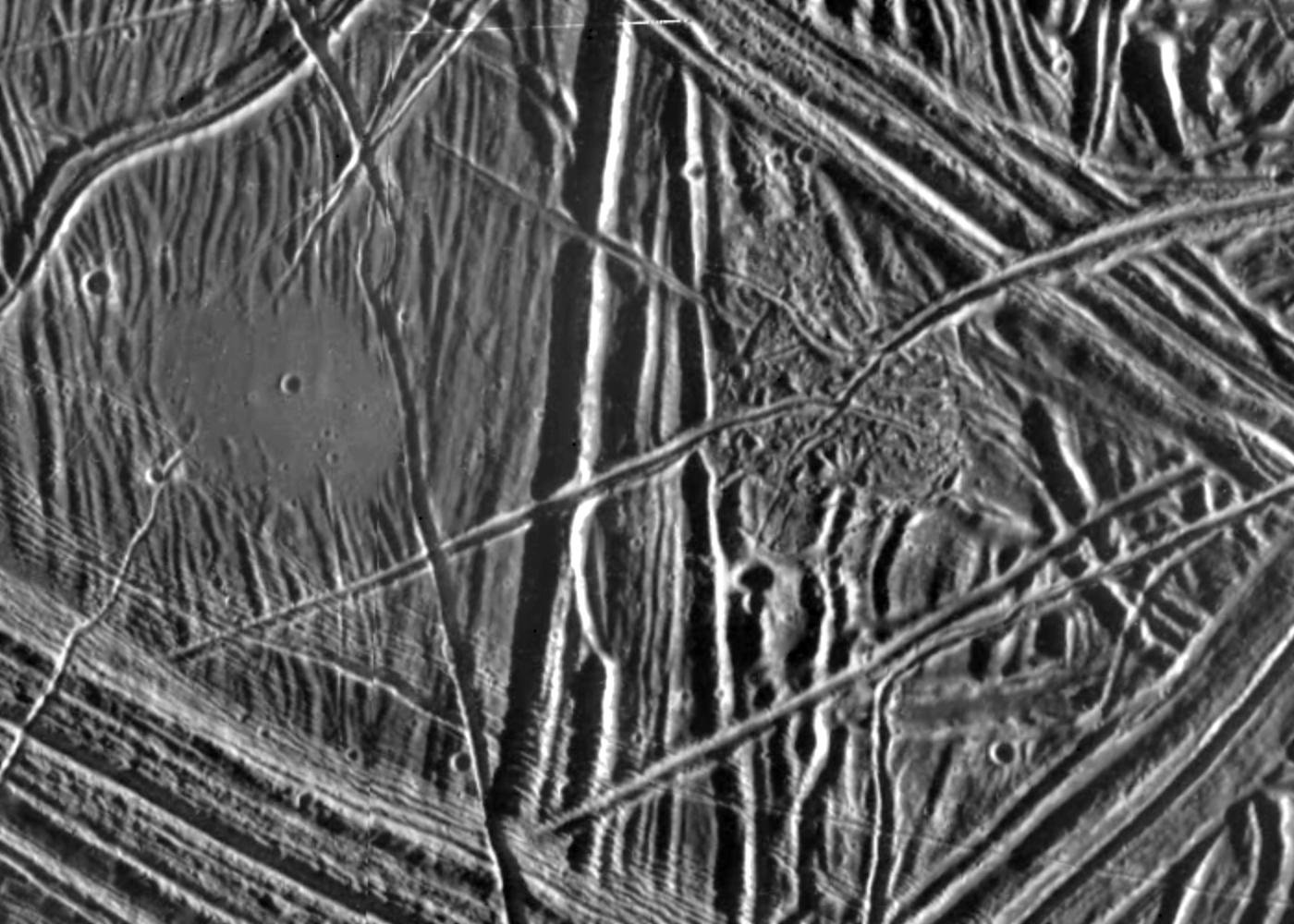
It’s hard not to love Europa. It is far and away the most promising of Jupiter’s 79 moons, covered in a rind of water ice perhaps 30 km (18 mi.) thick. Beneath the ice lies a salty, globe-girdling ocean that astronomers estimate could be up to 150 km (93 mi.) deep. As its larger sister moons—Io, Ganymede and Callisto—pass by in their orbits, their gravity causes Europa to flex slightly, generating interior heat that prevents the water from freezing. Give a warm, salty, amniotic ocean like that a few billion years, and there’s no telling what kind of life it could cook up.
The problem has always been that even if NASA were able to land a probe on Europa, it would have to drill through that 30 km ice crust to sample what lies beneath. However, a study published Tuesday in Nature Communications suggests that liquid water might exist in lakes and pools much closer to Europa’s surface, where a spacecraft could more easily get at it. Those tantalizing findings come not from studying Europa itself, but a much more familiar—and decidedly more accessible—place: Greenland.
Of all the features that mark Europa’s surface, none are as common as its network of double ridges. Essentially a series of criss-crossing gashes in the moon’s surface each hundreds of miles long, they take the shape of twin ice berms with crests reaching 304 m (1,000 ft.) in height, separated by valleys about 0.8 km (0.5 mi.) wide.
NASA does not currently have any spacecraft surveilling Europa, but it does make regular airplane overflights of Greenland, taking pictures and radar soundings of the ice to study the effects of climate change. On one such pass, the cameras captured a double ridge nearly identical, if smaller, to those found on Europa. The radar data showed that the gash in the ice was formed by water percolating up from beneath, gathering in cavities within the ice and refreezing. Water expands as it freezes, and that caused both the ice to crack and the berms to rise.
That simple bit of hydrology has big implications for Europa, the authors of the paper concluded. If its double ridges are formed the same way, that means water from the subsurface ocean is forced to the surface there as well, pooling not 30 km deep, but just a kilometer or two within the ice sheet. What’s more, when the ice initially cracks open, the water would be exposed to the chemistry on the surface, which includes sulfur and oxygen from the volcanoes of the nearby moon Io, as well as methane, carbon, nitrogen and hydrogen carried by meteorites that may have collided with the surface. That pre-biotic material could be a recipe for life in the subsurface pools.
“Water breaching the surface would be one way for the chemicals to infiltrate,” said Stanford University PhD student Riley Culberg, the lead author of the paper, in an email to TIME.
If near-surface pools exist on Europa, we should know soon. In 2024, NASA is sending the Europa Clipper to the Jovian system to study the icy moon up close; a powerful ice-penetrating radar will look for pockets of water. Next up—though NASA has no firm date yet—is a proposed Europa lander that would study the surface ice and drill at least partway through it, sampling its chemistry.
More Must-Reads from TIME
- Why Trump’s Message Worked on Latino Men
- What Trump’s Win Could Mean for Housing
- The 100 Must-Read Books of 2024
- Sleep Doctors Share the 1 Tip That’s Changed Their Lives
- Column: Let’s Bring Back Romance
- What It’s Like to Have Long COVID As a Kid
- FX’s Say Nothing Is the Must-Watch Political Thriller of 2024
- Merle Bombardieri Is Helping People Make the Baby Decision
Write to Jeffrey Kluger at jeffrey.kluger@time.com